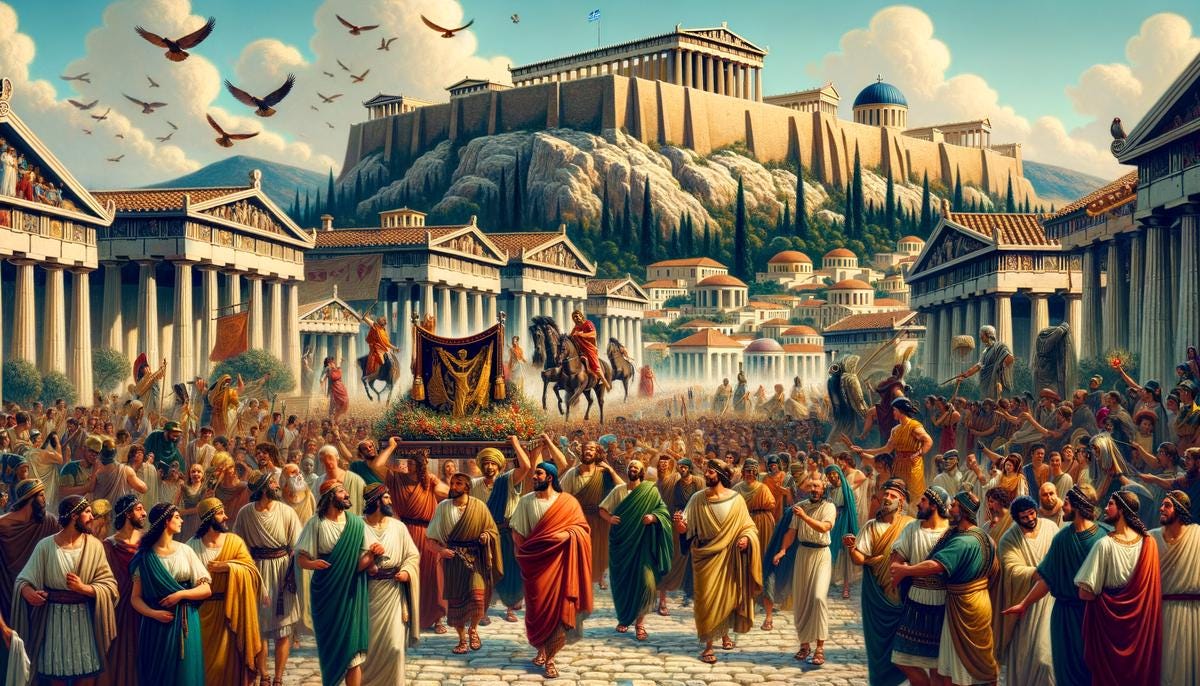Oresteia 3.9: How the Oresteia works as a work of art
Summary 17 # Man, God, and Society in Western Literature - From Gods to God and Back
At the end of the tragedy, the Oresteia becomes consciously a “work of art” unto itself. This is a work that reflects what the culture stands for, what it aspires to. In other words, it makes the particular “understanding of being” visible and lets it operate within the culture. This is precisely what Aeschylus aims to achieve for the Athenian citizens with the Oresteia. What Aeschylus shows Athenians through this tragedy
is that their culture transforms the Furies into “good spirits” (the title of the third play in the Oresteia). Through this transformation, a new spirit is produced: pride in Athens. Thus, the emotions of vengeance and clan warfare are transformed into positive emotions of loyalty and love for the city of Athens. It is this act of cultivating primitive emotions that fills the Athenians with pride in who they are. And this is the effect of the tragedy: it reveals this insight to its spectators.
Therefore, the tragedy ends with a sacred procession when the final words resound:
“An eternal covenant is made
in the house of the people of Athens.
Zeus, who sees all,
and the goddess of fate have united.Rejoice now with our song.”
This was the cue for the spectators to follow the actors singing through Athens,
all filled with the pride that they patriotism, above their private interests.
This "effect" of the tragedy—the cultivation of patriotism— may well have been the reason why the play was performed anew each year.
Through this annual performance, the Oresteia continued to affirm for Athenians their shared love and loyalty for the city. It was more than a story; it was a reminder
of the unity that transcends personal and family interests.
In this way, Aeschylus’ tragedy worked to transform the raw emotions of vengeance and discord into a collective pride, a civic devotion that celebrated Athens as a higher ideal. The procession, a living embodiment of this pride, allowed citizens to walk together in joyful reverence, renewing their loyalty to the city’s values.
So, each year, through art and ritual, Athenians would renew their sense of purpose,
deepening their identity and connection to Athens, carrying forth the message of the tragedy: that Athens, beloved above all, was their true legacy.




